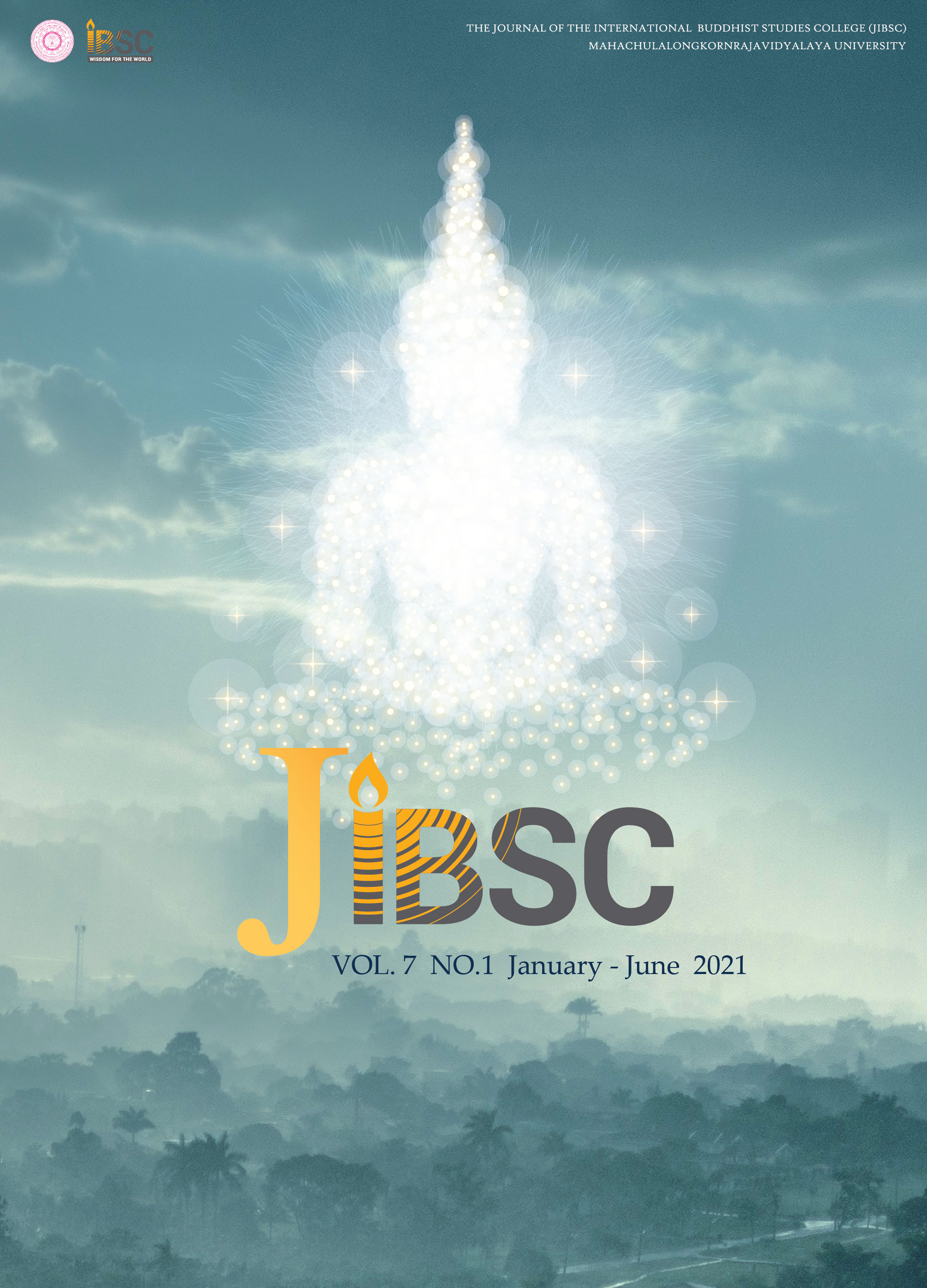Buddhist Method for Monastic Educational Preservation and Inheritance of Rāmañña Nikāya in Myanmar
Main Article Content
Abstract
The article is to explore the Rāmañña Nikāya, the Mon sangha in Myanmar through preservation and inheritance the Mon monastic education. The study shows that the Rāmañña Nikāya preserve and inherit the origin and development of the monastic education through learning and teaching with the oral and palm-leaf tradition, and the roles of the Rāmañña Nikāya in preserving and inheriting the monastic education through learning and teaching, publishing and translation and examinations in Mon language have been discovered. Learning and teaching process in Mon language and studying through bi-languages in Mon and Myanmar have been suggested. Then, the methods of preserving and inheriting the monastic education through learning to practice in accordance with the Vinaya and the Dhamma for Saṅgha have been presented.
Article Details
The Journal of TCI is licensed under a Creative Commons Attribution-NonCommercial-NoDerivatives 4.0 International (CC BY-NC-ND 4.0) licence unless otherwise stated. Please read our Policies page for more information on Open Access, copyright and permissions.
References
Nanamoli, Bhikkhu; Bodhi, bhikkhu, 2009. The middle length discourses of the Buddha: a new translation of the Majjhima Nikāya. Kandy: Buddhist Publication Society. Oldenberg, Hermann. 1997.
The Vinaya Piṭakam: One of the Principal Buddhist Holy Scriptures in the Pāli Language. Vol. I. Oxford: Pāli Text Society. Rhys Davids, T.W. et al. 1966.
The Dīgha Nikāya. Vol. II. London: Pāli Text Society. Takakusu, J.; Nagai, M. 1975.
Samantapāsādikā: Buddhaghosa’s Commentary on the Vinaya Piṭaka. Vol. I. London and Boston: Pāli Text Society. Trenckner, V. 1979.
The Majjhima-Nikāya. Vol. I. London: Pali Text Society. Choompolpaisal, Phibul. 2015.
Political Buddhism and the Modernisation of Thai Monastic Education: From Wachirayan to Phimonlatham (1880s–1960s).
Contemporary Buddhism. Vol. 16, No. 2. Online Publication: Routledge Taylor & Francis Group.
Janakabhivamsa, Ashin. 2016.
The Sāsanā 25-26 century khit: Shin Mahabhuddhaghosa, or Ashin Janakabhivamsa May Myo Moe Kyi. Yangon: Seik Kue Cho Cho Publication. Nyarneinda, Venerable. 2011.
A Study of the Rāmañña-Nikāya in Rāmaññadesa (Southern Part of Burma) and Sri Lanka. Colombo: Buddhist and Pāli University of Sri Lanka. Pan Thar, Nai. 2016.
A history of Rāmañña Nikāya and Mon Buddhism. Yangon: Nan Tha Zin Publication.
Payutto, P.A. 2018.
Prelude to Buddhadhamma: Noble life – Healthy Society – Delightful Nature. Bangkok: Phlidhamm Publishing.
Sei La Te Za. Venerable. 2018.
A Comparative Study of Monastic Funeral Traditions Between the Dhammayuttika Nikaya and the Rāmañña Nikāya in Mon State, Myanmar. Bangkok: Mahidol University. Sein Ko, Taw. 1892.
The Kalyānī Inscriptions. Rangoon: Government Printing.Vicakkhanabhivamsa, U. 2007.
Vinayānuggaha of Yangon: 75th Jubilee Anniversary of the Oral Examination. Yangon: Aung Kyaw Kyint Publication. Von Hinuber, Oskar. 2008.
A Handbook of Pāli Literature. New Delhi: Munshiram Manoharlal Publishers Pvt. Ltd. Za Wa Na, Venerable. 2017.
The Trend of the Role of Ramañña Nikāya in the Next Decade in Mon State. Bangkok: Mahachulalongkorn-rajavidyalaya University.
Candobhāsa, Most Venerable Bhaddanta. the former secretary of Rāmañña Dhammācariya, the incumbent of Rāmañña Nikāya Kyaik monastery, Pong, Mon state, Myanmar. In-depth interview. December 02, 2019.
Maung Toe, Nai. A Mon Historian and Former Director of National Archive Department, Ta Mwe, Yangon, Myanmar. In-depth interview. December 17, 2019.
Nandasāra, Most Venerable Bhaddanta. Aggamahapandita, vice president of Rāmañña Dhammācariya and vice president of Saṅgha Mahayaka of the state, the incumbent of Rāmañña Nikāya Bae La-doo-Don monastery, Kyaik-kha-mi, Mon state, Myanmar. In-depth interview. September 09, 2019.


